
10 magnificent buildings built in Toronto in the 1960s
The 1960s were a massive decade for architecture in Toronto. In addition to the birth of New City Hall and the TD Centre, Brutalism left its mark on the city with grand concrete structures that would inspire designers to reach new heights in the 1970s. In the span of 10 years, Toronto had embraced modern design and there was no looking back.
Here are some magnificent Toronto buildings that rose in the 1960s.
University of Toronto Scarborough
John Andrews' University of Toronto Scarborough campus was one of the most significant and studied architectural works in this city for decades after it opened in 1964. The Brutalist complex is still considered one of the chief examples of this brand of architecture and is surprisingly human in orientation when you explore the space.
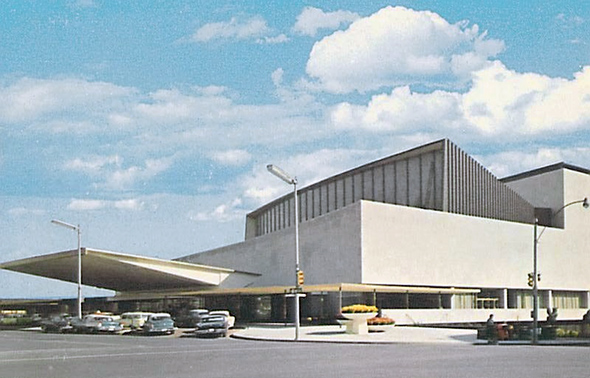
O'Keefe Centre (now Meridian Hall)
One of architect Peter Dickinson's most grand Toronto works, the O'Keefe Centre opened in 1961. Recognizable for its stunning marquee canopy (a smaller version of which could be seen at the Four Seasons Motor Hotel), it now serves as the base of the L Tower.
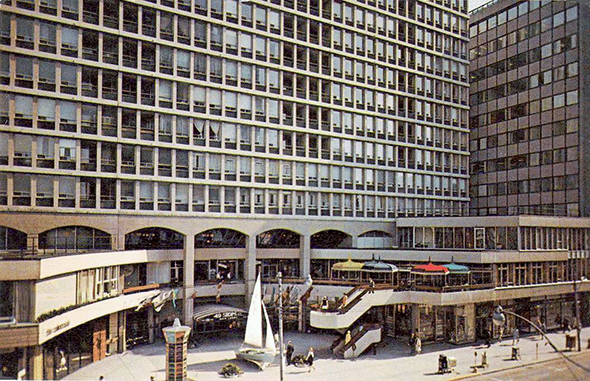
The Colonade
I doubt that many young people find much beauty in the Colonade nowadays, but architect Gerald Robinson's concrete palace near Bloor and Avenue Rd. was a marvel when it opened in 1964. It's aged well, but concrete is no longer as sought after a building material.
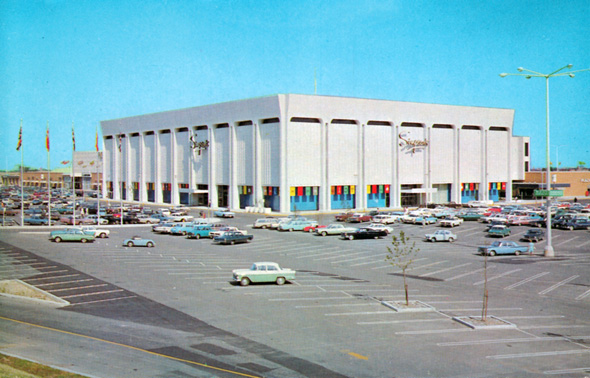
Yorkdale Shopping Centre
Mall architecture can be as bland as it comes, but Yorkdale was a stunning exception. Completed in 1964, the majority of the mall was designed by John Graham Jr., who's most famous for the Seattle Space Needle.
John Andrews also took part in designing the Simpson's department store. Much of the original work has been lost through renovations, but some remains.
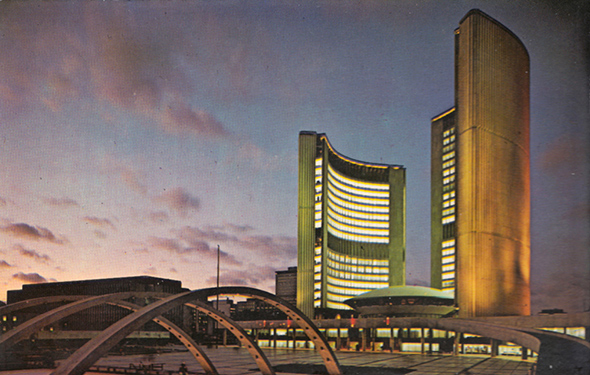
City Hall
This was the building that changed everything in Toronto. The winner of a massive international design competition in the early part of the decade, Viljo Revell's modernist municipal headquarters still looks like it comes from the future.
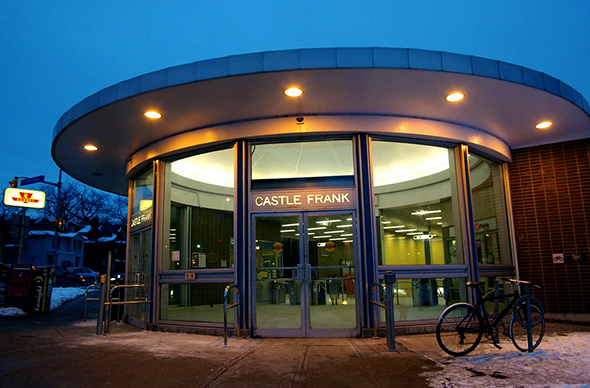
Bloor-Danforth Subway Stations
There's an understated elegance to the Bloor-Danforth Subway Line that's easy to spot if you look past the grimy walls and aging signs. Architects John B. Parkin and A. G. Keith provided a consistent design that alternated between five colours of tile and four versions of trim.
Station entrances like the rounded one found at Castle Frank have become iconic over the last 50 years.
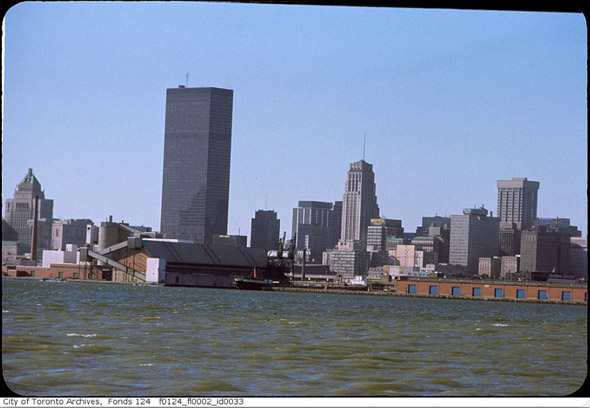
The TD Centre
Surely the second most important building that rose in Toronto during the decade, the black steel of Mies van der Rohe's TD Centre was like nothing Toronto had ever seen at the time. The city's modern Financial District was born with this imposing complex.
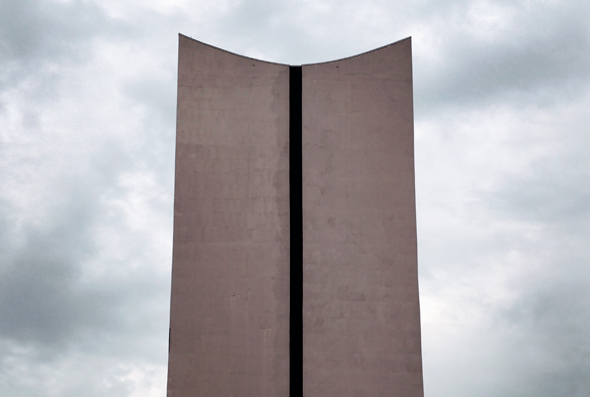
20 Prince Arthur
Uno Prii deserves more respect for being the pioneering architect that he was. As the Toronto began to see a boom in concrete slab apartment buildings, he injected Googie-influenced style into his buildings, many of which can be found scattered around the Annex today. 20 Prince Arthur (1968) is the cream of the crop, though.
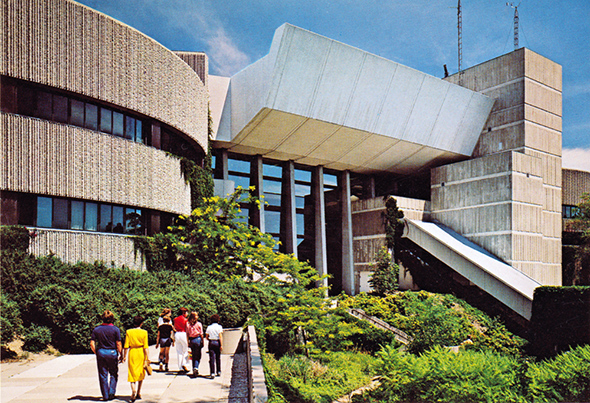
Ontario Science Centre
Raymond Moriyama's Ontario Science Centre is a building that needs to be experienced from both afar and within to get a true appreciation of its best attributes.
Despite its sprawling size, from a distance one sees how well it blends into the ravine wall, the topography of which is also used to invite the natural surroundings into the building as one descends each floor.
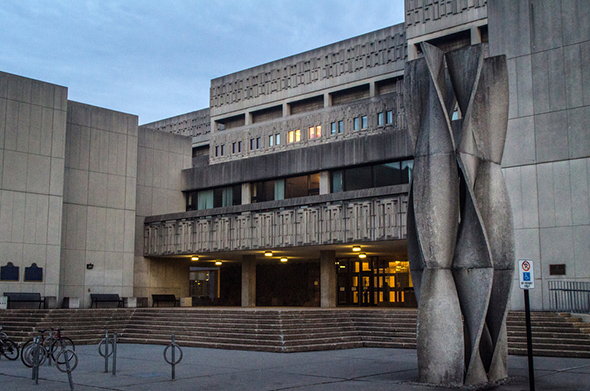
University of Toronto Medical Sciences Building
Few concrete structures are quite as intricately adorned as the Medical Science Building at U of T. While it takes up a huge plot of land at King's College Circle, it somehow manages to be unimposing.
Designed by architect Peter Goering, the building is perhaps best known for its concrete flourishes, which were the work of artists Ted Bieler and Robert Downing.
The Toronto Archives, Chuckman's Blog, The University of Toronto, Thomas Guignard, Derek Flack, and PLTam.
Latest Videos
Latest Videos
Join the conversation Load comments







